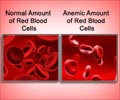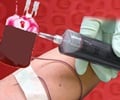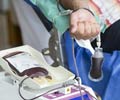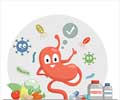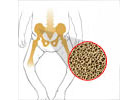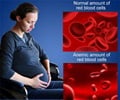
‘Female adolescent blood donors are more likely to have iron deficiency anemia. However, new regulations or accreditation standards could help make blood donation even safer for young donors.’
Read More..Tweet it Now
Each year, an estimated 6.8 million people in the U.S. donate blood, according to the American Red Cross, which coordinates blood drives across the country. Adolescents are increasingly contributing to the donor pool due to blood drives at high schools. In 2015, adolescents ages 16-18 contributed approximately 1.5 million blood donations.Read More..
Although blood donation is largely a safe procedure, adolescents are at a higher risk for acute, adverse donation-related problems, such as injuries from fainting during donation, explains study leaders Eshan Patel, M.P.H., a biostatistician in the Department of Pathology at the Johns Hopkins University School of Medicine, and Aaron Tobian, M.D., Ph.D., professor of pathology, medicine, oncology and epidemiology at the Johns Hopkins University School of Medicine and director of transfusion medicine at The Johns Hopkins Hospital.
Additionally, they add, blood donation may also increase the risk of iron deficiency, as each whole blood donation removes about 200-250 milligrams of iron from the blood donor. Because adolescents typically have lower blood volumes, when donating the same amount of blood, they have a relatively higher proportional loss of hemoglobin--the iron-containing protein in blood cells that transports oxygen--and consequently more iron during donation than adults. Females are even more at risk of iron deficiency than males due to blood loss during menstruation every month.
Numerous studies have shown that younger age, female sex and increased frequency of blood donation are all associated with lower serum ferritin levels (a surrogate for total body iron levels) in blood donor populations. However, note Patel and Tobian, no study using nationally representative data have compared the prevalence of iron deficiency and associated anemia between the blood donor and nondonor populations, specifically adolescents.
Toward this end, the researchers analyzed data from the National Health and Nutrition Examination Survey, a long-running study designed to assess the health and nutritional status of adults and children in the U.S. based on both physical exams and interviews conducted by the Centers for Disease Control and Prevention. From 1999 to 2010, this study included collections of blood samples as well as questions about blood donation history in the past 12 months.
Advertisement
They report that about 10.7 percent of the adolescents had donated blood within the past 12 months, compared with about 6.4 percent of the adults. Mean serum ferritin levels were significantly lower among blood donors than among nondonors in both the adolescent (21.2 vs. 31.4 nanograms per milliliter) and the adult (26.2 vs. 43.7 nanograms per milliliter) populations. The prevalence of iron deficiency anemia was 9.5 percent among adolescent donors and 7.9 percent among adult donors--both low numbers, but still significantly higher than that of nondonors in both age groups, which was 6.1 percent. Besides, 22.6 percent of adolescent donors and 18.3 percent of adult donors had absent iron stores.
Advertisement
Patel and Tobian note that some federal policies and regulations are already in place to protect donors in general from iron deficiency due to this altruistic act, such as hemoglobin screening, a minimum weight to donate and an eight-week interval between donations for repeat whole blood donation. However, more protections are necessary for adolescent donors--for example, suggesting oral iron supplementation, increasing the minimum time interval between donations or donating other blood products such as platelets or plasma rather than whole blood could help mitigate iron loss.
"We're not saying that eligible donors shouldn't donate. There are already issues with the lack of blood supply," Tobian says. "However, new regulations or accreditation standards could help make blood donation even safer for young donors."
Source-Eurekalert


